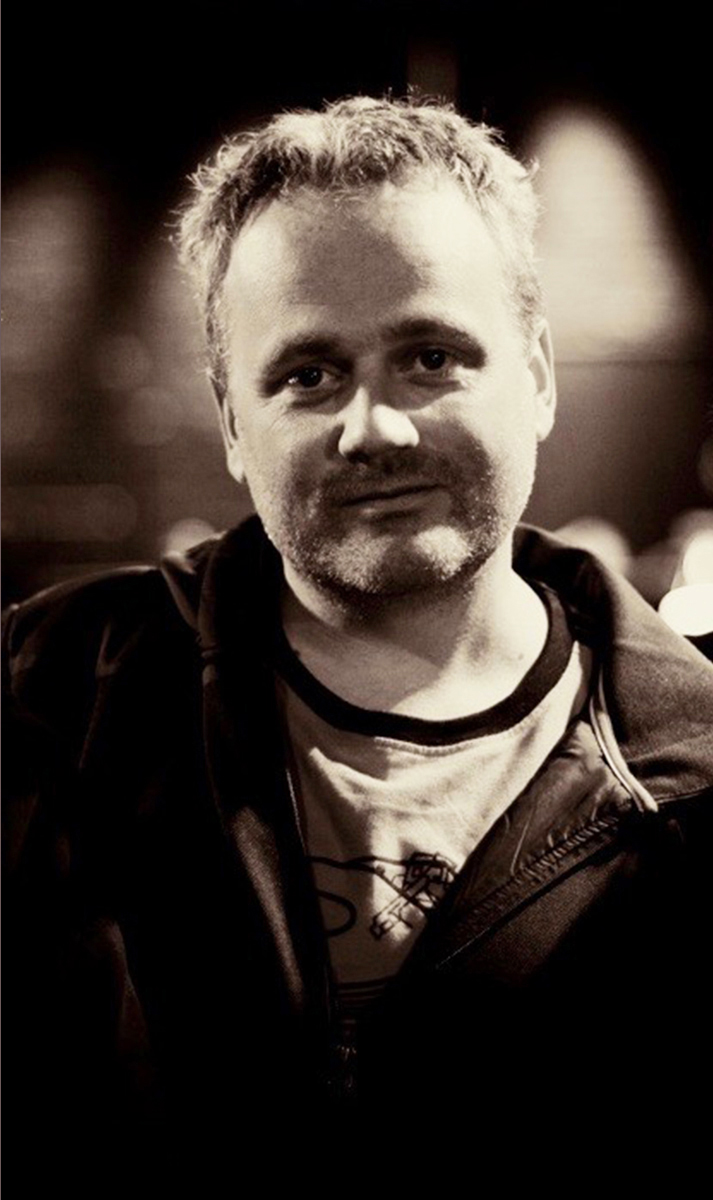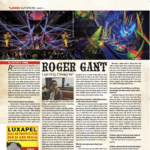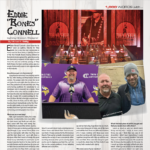
After 25 years on the road touring, Stefaan “Smasher” Desmedt, Parnelli Award winner for Video Director of the Year in 2009, is now creative technical director with PRG in Los Angeles developing new mixed reality technology for live events. Smasher was a longtime member of the U2 team, where he served as video director, as well as technical director, and d3 programmer for technology-pushing U2 tours including Zoo TV, Elevation, Vertigo, 360˚, iNNOCENCE + eXPERIENCE and The Joshua Tree Tour in 2017. He’s also served as video director for Madonna’s MDMA tour, Robbie Williams’ Take the Crown tour, Prince’s Welcome 2 tour, The Rolling Stones’ 2014 “14 on Fire” tour as well as working with Kings of Leon, stand-up comedian Chelsea Handler, and the launch for Apple’s iPhone 6. Smasher has always embraced new technology as part of his forward-thinking approach to his projects and that often sets his work apart.
How did you start in the industry?
I got started at a very tiny company in Torhout, Belgium, just outside Bruges — VIP, Video Image Processing. Frederic Opsomer was there as well. The company grew so fast because we had the biggest inventory of video walls; there were only two companies in Europe doing these massive screens at that time. At the end of ‘92, Willie Williams came knocking on our door, looked into our video technology, and then he took us on the Zoo TV tour with Nocturne. I was only 22 years old then. I stuck with Nocturne because it was exciting to be touring. It was good choice, because VIP went bankrupt and became XL Video, when Marcel DeKeyzer bought it. I was doing jobs with Nocturne, but I end up in time working a lot for XL Video, where we did Formula One races and the ‘96 Olympic Games in Atlanta. I was the technical director for outdoor screens at the Olympics. After the Olympics, I went straight to Prague to start the Michael Jackson HIStory tour for Nocturne. The next U2 tour then was PopMart, and they had the first new LED screen technology. LED had started rising and together with Saco, we developed this whole LED screen for PopMart. I oversaw all the processing and how we drove it. There was no talk of pixel maps; that didn’t exist yet.
Where did the nickname “Smasher” come from?
“Smasher” came about in ‘93, on U2’s Zoo TV. We had 211 active projectors on the tour. There was a bug in the system and, in the mornings, the power supplies didn’t want to start up; but they would start up if you kicked them or smashed them. It was after a 48-hour day when I was frustrated and I took a projector and threw it. There was a guy on the video crew, Richard Davis from Georgia, who couldn’t pronounce my last name, so he already had started calling me Smash. After I threw that projector, that was it; the moment when I thought, “Okay, you’re going to be stuck with that name for the rest of your life.”
What were some milestones in your career?
I think the big one for me was still my very first touring gig, Zoo TV, because we pushed technology so hard there. I would say it was one of the most epic tours ever designed and it changed the world so much in terms of video — and controlling video. That was Mark Fisher and Jonathan Park; it was unbelievable what they created. Definitely, the last ten years were amazing for me, all the U2 tours for sure, but also tours like Madonna pushed stuff really hard. Her 2012 MDMA tour was definitely a milestone. Working with her is great — I would say she’s probably the hardest working artist I’ve ever met in my life. Doing the Stones “On Fire,” in Europe and Australia in 2014 — definitely among my top tours as well. Another great experience was The Million Dollar Piano residency with Elton John in Las Vegas, because I worked with Mark Fisher and Patrick Woodroffe. It was just amazing, having them sit behind me and creating a show with them.
But you’re off the road now, how does that feel?
Yes, I quit last year. I started the last U2 show, the eXPERIENCE + iNNOCENCE Tour, spent about three months on it, and then, in Los Angeles, I just stayed behind. I waved it all goodbye. It was the right moment to do it, because technology is moving so fast. When you tour for a year, you kind of invent technology the year before, but then you are stuck for a year as you tour that technology and then you are behind, and you have to reinvent to catch up again. That always bothered me. I do have to say not being on the road now, I miss the adrenaline that you have seconds before the show; when the house lights go off and whatever happens next — that moment is what I miss the most.
Talk about your new role and where you see video technology going in the future.
I’m creative technical director now at PRG. They gave me this studio to do AR/VR/mixed reality work. I’m trying to make it show-worthy. I know there’s a lot of AR and VR and whatever out there, but in terms of live performances, it must be solid. It needs to be cheap as well, because you can’t spend a ton of money on it. Not everyone is Madonna and can afford what she did on the Billboard Awards. I am doing a whole bunch of R&D with a friend, Scott Miller; we’re trying to push it to the live world and have it be more accessible. I’m very much client-facing here, trying to put clients in front of what we’re doing because it’s hard to explain to people exactly what it is, and how to implement it into a workflow. I know how the current workflow is and how to work with it as we introduce these new ideas. There are a lot of gaming engines out there; a lot of people trying to do the same thing, but it’s quite fragile. We have an interesting solution for mixed reality that I enjoy showing to clients.
What are some of your thoughts about video in show design these days?
These days, you’re surrounded with visuals, and it’s all about video; it’s all a bit too much about video, if you ask me sometimes. I think sometimes people forget the essence of the music; that we’re actually listening to music. I don’t know, I think we could fall back into some beautiful analog shows again.
What has surprised you most about your career path?
What I’m always surprised about is that at the beginning of ‘91, I was working in a brick factory, and I thought I was going to be doing that for the rest of my life. Then two years later, I was standing on the U2 stage. That was what I’m still most amazed with, and I’m very thankful to all the people that helped me to get where I’m at now; I don’t take it for granted.
Michael S. Eddy is editor-in-chief of PLSN affiliate Stage Directions magazine.


